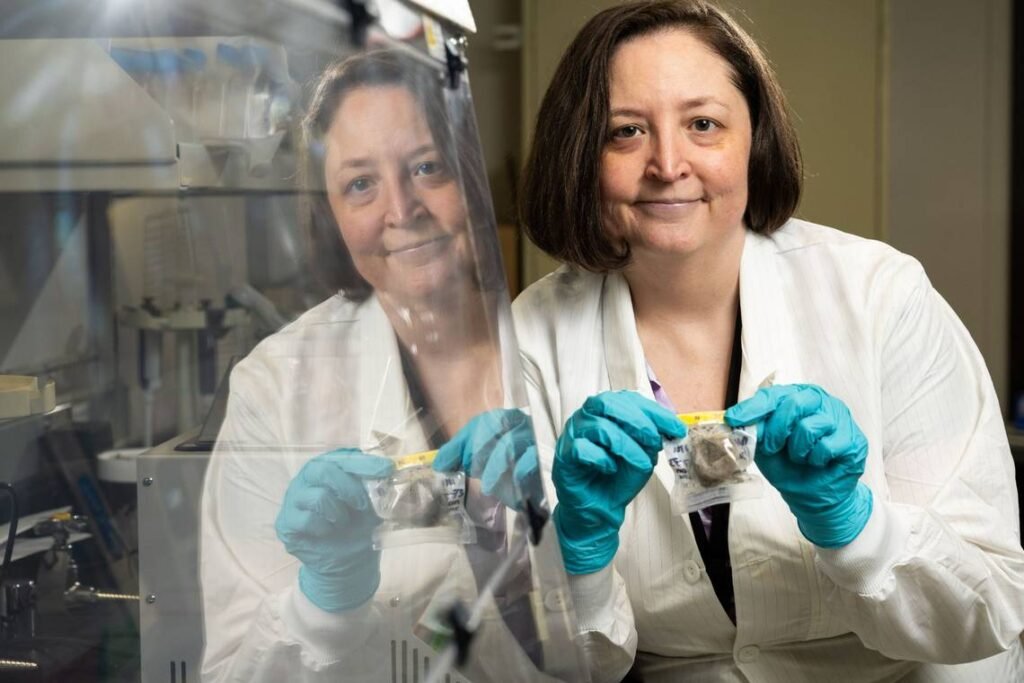The key to staying safe is identifying risks, mitigating them, and being prepared for the worst. This applies to all types of hazards, including threats from biological agents, whether naturally occurring or intentionally manipulated.
Researchers at the Department of Energy’s Pacific Northwest National Laboratory are tackling this problem with the goal of protecting us from a host of biological threats, including those that may result from the effects of a warming climate.
In one such project, researchers are trying to determine whether the billions of bacteria present in Alaska’s permafrost could harm humans as it thaws. This study and similar biodefense projects rely on new methods developed at PNNL to isolate pathogens from complex samples.
The multidisciplinary team combined expertise in microbiology, proteomics, biochemistry, and data analysis to create a three-step analysis technology called OmniScreen.
Unlike traditional analytical methods, OmniScreen allows bacteria to remain alive after being detected and isolated from research samples. This allows researchers to not only identify which bacteria are present, but also assess how harmful they are.
Scientists at Pacific Northwest National Laboratory have developed a new process that combines biology and synthetic chemistry with machine learning to detect, isolate and study pathogens and their potential for harm.
The first step is to extract the bacteria. As a result, more than 1 million different bacteria may need to be analyzed. In the second step, this large sample is narrowed down to those with characteristics that could potentially infect humans.
Bacteria can only infect us in a limited number of ways, such as by attaching to our cells or by scavenging from our cells what they need to survive. So the researchers designed color-coded molecular probes that they use to tag bacteria with those characteristics.
In the third step, researchers perform additional analyzes on the tagged bacteria to determine whether they can infect human cells. Our bodies effectively defend against many of the bacteria we encounter. The goal here is to find something that can have a significant impact on human health. This includes flagging potential sources of pandemics before they begin.
To achieve this goal, researchers expose human intestinal and lung cells to tagged bacteria. These genetically modified cells emit light when inflammatory pathways are activated by tagged bacteria. By looking at cells under a microscope, scientists can see whether human cells move away to avoid attack.
A slower defense response indicates a lower risk for human cells. Faster responses and failed attempts leading to cell death are indicators of pathogen lethality.
Manually analyzing the 14,000 microscopy images generated by each experiment would take more than a week, so the researchers developed a machine learning algorithm to process the images more quickly. With the help of machine learning, we can now determine whether a sample is potentially harmful in just 48 hours.
Understanding the chemical signature of infection reveals both how harmful a pathogen is and the cellular mechanisms involved in that harm. Scientists can use this knowledge to determine whether new preventive measures or treatment options are needed, and if so, how to design effective vaccines or treatments.
Building on this research, scientists are exploring new techniques that allow them to study cell membranes rather than whole human cells, which are difficult to keep alive for the duration of the study.
They are working with university collaborators to study toxins that can penetrate cell membranes and attack cells. The new research technique involves stripping the cell membrane from living cells, exposing them to different bacteria and running an electric current through them. Changes in membrane resistance indicate that holes are starting to form, indicating successful bacterial attack.
When it comes to biosecurity, no one knows when or where the next pandemic will occur. Fortunately, PNNL scientists, along with thousands of like-minded researchers around the world, are working hard to help us move forward in understanding and mitigating risks. Masu.
Stephen Ashby is director of the Pacific Northwest National Laboratory in Richland, Washington.

